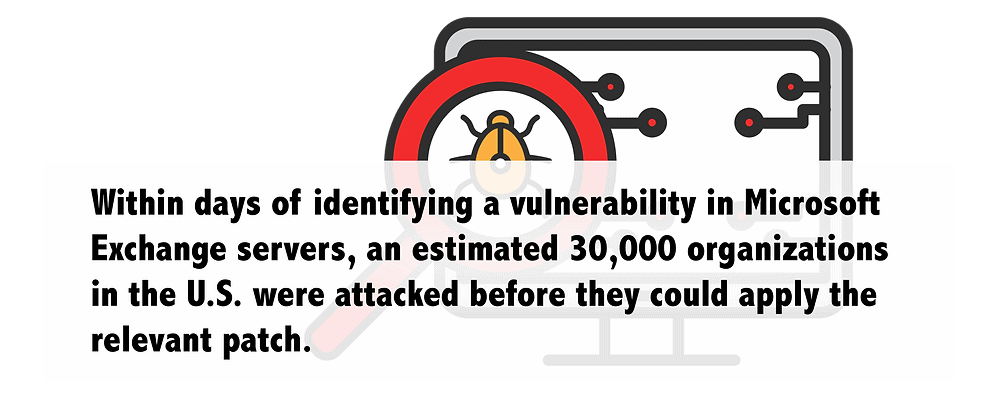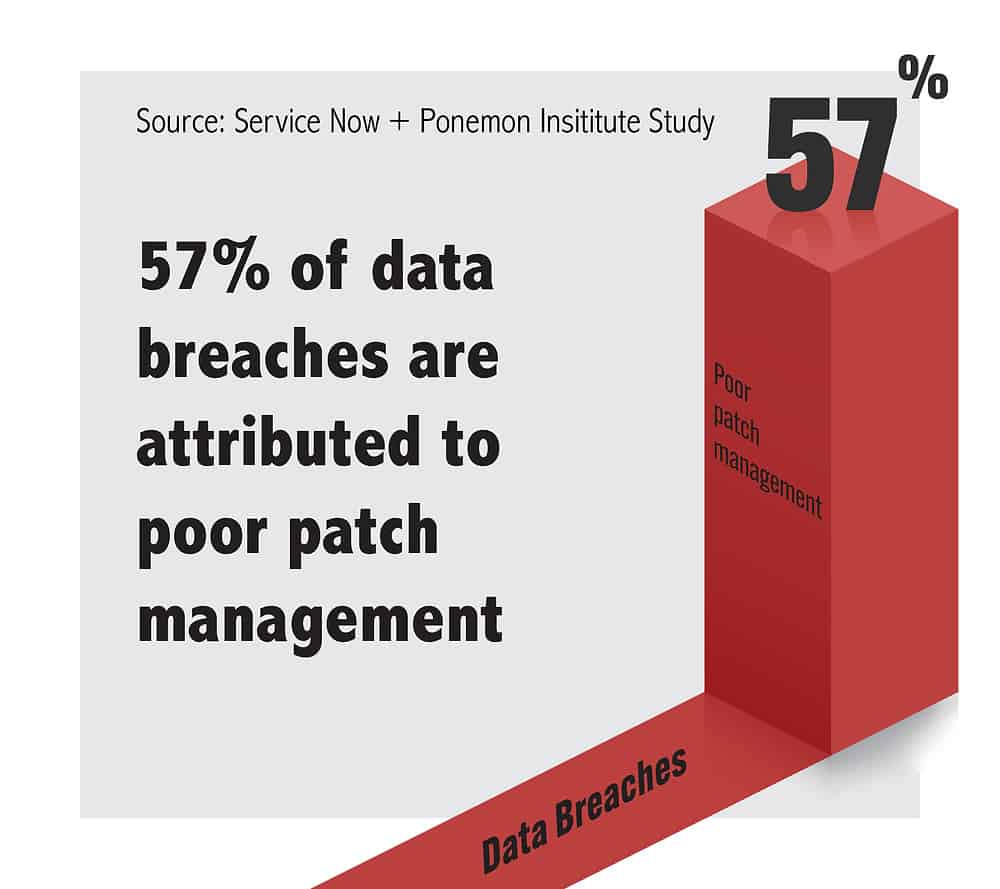
Cyber criminals are constantly looking for or creating new ways to hack into your network, as is demonstrated by the increasing amount of cyber attacks of all types. However, while it is impossible to create a perfectly impenetrable network in such an environment, deploying patch management on your network is one of the most important steps you can take toward keeping your network as secure as possible and ensuring that it is running smoothly.
 Patches are a set of changes to a computer program or its supporting data that are created to update, fix or improve the program and rid it of any vulnerabilities. Until a software or hardware developer has properly applied patches to any vulnerabilities existing on their network, the door to the company’s network remains wide open, making it much more vulnerable to cyber attacks. This applies to everything within a network’s infrastructure, including VPNs, operating systems, network security devices, endpoint security software, IOT devices, home routers, browsers, etc. Failing to keep up with patches as they are released is a huge flaw within many companies and ultimately makes it easier for cyber criminals to enter a network and do whatever they please.
Patches are a set of changes to a computer program or its supporting data that are created to update, fix or improve the program and rid it of any vulnerabilities. Until a software or hardware developer has properly applied patches to any vulnerabilities existing on their network, the door to the company’s network remains wide open, making it much more vulnerable to cyber attacks. This applies to everything within a network’s infrastructure, including VPNs, operating systems, network security devices, endpoint security software, IOT devices, home routers, browsers, etc. Failing to keep up with patches as they are released is a huge flaw within many companies and ultimately makes it easier for cyber criminals to enter a network and do whatever they please.
Zero-day attacks are one common consequence of improper patch management, and 2021 has been a
record-breaking year for these attacks. On March 2, 2021 Microsoft detected multiple zero-day exploits being used to attack on-premises versions of Microsoft Exchange Servers. This was known as the
Hafnium attack. Microsoft quickly released patches to plug the four flaws for Exchange Server versions 2013-2019. Within the next few days, an estimated 30,000 organizations in the US were attacked, as
hackers used several Exchange vulnerabilities to gain access to email accounts and install web shell malware, giving the cyber criminals ongoing administrative access to these compromised servers and leaving many organizations open to attack for months after the patches were released. Unfortunately, this is only one of many examples demonstrating the dangers of failing to apply good patch management procedures.
Key benefits of patch management

- A more secure environment – Patch management fixes vulnerabilities in your software and applications that are susceptible to cyber attacks, helping your organization reduce its security risk. Regularly patching vulnerabilities helps to manage and reduce risks that may exist in your environment and helps protect your organization from potential security breaches.
- If your software and applications support automatic updates, ensure that function is on and working properly.
- At the same time, regularly checking for patches manually is a great idea, as patches continue to be released when they are needed as well as to provide new features/functionalities.
- Whether automatically or manually checking for newly released patches, the more often, the better.
- System uptime and feature improvements – Patch management goes beyond software bug fixes; it also ensures your software and applications are kept up-to-date and running smoothly, supporting full system capabilities and uptime. Patches also include feature/functionality updates and can be critical to ensuring you have the latest and greatest that your product has to offer.
- Maintaining compliance with company and regulatory standards – With cyber attacks happening more frequently, organizations are often required to maintain a certain level of compliance with regards to cyber hygiene. Patch management is a key piece of adhering to compliance standards. If your organization is not patching and therefore not meeting compliance standards, you could be hit with fines from regulatory bodies. Keeping up with patch management ensures that you are in compliance.
Creating an effective patch management system is integral to maintaining your organization’s network security and making it more difficult for persistent threat actors to gain access to your company. For more information about patch management and improving your organization’s cybersecurity posture, contact us at info@redpointcyber.comand follow us on LinkedIn to avoid missing our weekly cybersecurity Tip Tuesdays!